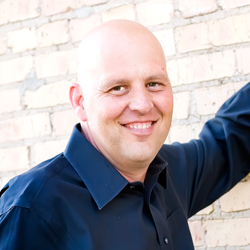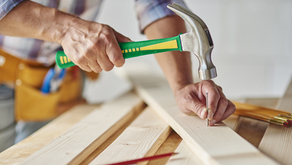Do you enjoy keeping up with home trends? Finding what’s in style is easy these days. You can stream a whole host of renovation shows or watch home influencers re-decorate entire rooms in 60-second social media videos. Even a quick search online can tell you that outdoor kitchens and patio/deck upgrades are popular right now.
When it comes to homeownership, another “trend” is emerging. Homeowners are increasingly turning to home equity lines of credit, also known as HELOCs, as a way to borrow money. American Banker reports that more than $100 billion in HELOCs was financed in the first half of 2022 — that’s a 50 percent increase over last year at that time.
Why the uptick in popularity?
Home prices have risen in recent years and are still near record highs, despite a now-slowing housing market. That has resulted in homeowners currently having quite a bit of built-up equity in their homes. Using a HELOC, homeowners can turn that equity into cash to use for a variety of reasons, most often for home improvements, but also to finance other projects or meet other financial goals.
But, just like you have to determine if cooking al fresco feasts or adding a pergola to your patio is right for you for the long-term, you have to decide if a HELOC is right for you and your future.
As a mortgage loan officer, homeowners often reach out to me with many questions about HELOCs. I’m answering the most frequently asked questions here, to help you better determine if a HELOC can help you meet your home and other financial goals.
The 6 Most Frequently Asked Questions about HELOCS, Answered
1. How is Home Equity Calculated?
Home equity is the difference between how much you owe on your mortgage and how much your home is worth. Here’s a very quick, very basic example of how you build equity in a home:
- You purchase a home with a sales price of $450,000. You put 20 percent ($90,000) down and take out a mortgage loan for the remaining $360,000.
- After five years, your monthly loan payments have reduced your mortgage balance down to $335,000.
- During this same time, your home’s market value has increased to $475,000.
- To calculate your home’s equity, subtract your mortgage balance of $335,000 from the current market value of $475,000.
- You have $140,000 in equity … if you have no other obligations tied to your house.
2. How Much Money Can I Borrow Against My Home’s Equity?
To answer this question, I first have to explain an acronym you’ll most likely read or hear about when researching HELOCS: the CLTV.
CLTV stands for combined loan-to-value ratio. Lenders use this ratio to help determine how much you can be approved for when applying for a HELOC. Most lenders, Bank of Utah included, require a CLTV ratio of 80 percent or lower. But how is the CLTV calculated? Like this:
We add the amount you want you want your line of credit to be, to your current mortgage balance. Then we divide that by the current appraised value of your home. Using our previous home equity example:
- Let’s say you currently have a loan balance of $335,000 (you can look for your loan balance on your monthly loan statement or in your lender’s online mortgage portal).
- You want to take out a $40,000 home equity line of credit. Your home currently appraises for $475,000. So your combined loan-to-value equation would look like this:
$375,000 (that’s what you want to borrow + your current loan balance) ÷ $475,000 (appraised value) = 0.78, or 78 percent CLTV
Again, most lenders require a CLTV ratio of 80 percent or lower to approve a HELOC. Knowing that, you can also figure out how much you can borrow by multiplying your home’s value by 80 percent, then subtracting your loan balance. Here’s an example:
$475,000 (appraised value) x .80 = $380,000
$380,000 - $335,000 = $45,000
In this instance, you could borrow up to $45,000.
3. How Does a HELOC Work?
HELOCs work similarly to a credit card, only HELOCs usually have much lower interest rates.First, you’ll be approved for a set amount of credit to use (see question 2). You’ll then have what is called a draw period, usually 10 years, when you can withdraw money to make purchases or cover expenses.
When your 10-year draw period ends, you’ll transition into a repayment period. During this timeframe, usually also 10 years, you can no longer withdraw money from your line of credit.
4. How Do Interest Rates/Payments Work with HELOCs?
Interest rates are calculated based on your credit score, loan amount and loan to value ratio, and they vary from lender to lender.
Generally, HELOCs have variable interest rates. That means your interest rate can go up or down, depending on what is happening nationally. HELOCs are tied to the prime rate. When you hear on the news that the Federal Open Market Committee is raising or lowering the federal funds rate, prime rates will almost always move in the same direction.
When you have a HELOC, only the money you borrow from it is subject to the variable rate. Your original, low-interest mortgage loan remains intact.
The important thing to remember about most variable-interest HELOCs is this: Your minimum payments during the draw period are based on the amount you've withdrawn, not your total line of credit, and you only pay interest on the money you’ve borrowed from the HELOC. Therefore, the minimum payment during the draw period tends to be lower.
Also, similar to a credit card, a HELOC isn’t a one-time use. You can pay it down and withdraw from it again as often as you’d like within the draw period.
When the draw period expires and you transition into the repayment period, your minimum monthly payments are based on the total amount of your loan (the principal) plus interest. Therefore, your minimum monthly payment will increase during this period.
Many times, lenders will offer special fixed-rate promos for a set period at the beginning of a variable-rate loan, say for the first six months. This is known as a start rate. When applying for a HELOC, be sure to understand the difference between the start rate and what the rates could fluctuate to after that.
5. Are There Any Closing Costs or Pre-payment Penalties?
For lower loan amounts (less than $250,000), most lenders do not charge closing costs to open a HELOC. A prepayment penalty may be charged in the first three to five years of opening a HELOC with a lender. At Bank of Utah, it’s three. The prepayment penalty helps offset the closing costs the lender pays when opening the line of credit.6. Can HELOCs Just Be Used for Home Improvement Projects or Repairs?
No. While the most common use for a HELOC is to put it right back into your home — which is smart because upgrades will increase your home’s overall value — HELOCs can be used in a variety of other ways. Other common uses include:
a. Paying off high-interest credit card debt.
Remember when I mentioned that HELOCs generally have lower interest rates than credit cards? By rolling your credit card debt into a HELOC, you save money by paying less in interest.
b. Funding financial emergencies, such as if you lose your job, have a major medical bill or face another type of crisis.
It’s difficult to anticipate emergencies, but many people use HELOCs as a tool to have, “just in case”. You can leave the balance at zero, never paying interest, but the money is available should a need arise.
It’s best to build an emergency fund over time, through savings, but a HELOC can definitely be used in the event of a financial emergency.
c. Putting money down on an investment property or second home.
Some Final Thoughts
Keep in mind that most HELOCs are variable-rate and tied to prime rates. As the Federal Open Market Committee battles inflation by raising the federal funds rate, prime rates are also rising. However, HELOCs are worth more research because they can still help you with your financial goals and future projects — like hiring someone to build that pergola instead of doing it yourself! (If you’re anything like me, a contractor will get it done much faster!)
As I mentioned in the beginning, homeowners currently have a lot of built-up equity in their homes. Because mortgage rates are higher than HELOCs at the moment, you can use a home equity line of credit to make your current home more of your dream home if buying a new one isn’t realistic right now. And don’t forget, HELOCs still have lower rates than credit cards, and many also have start-rate incentives.
For these reasons, the HELOC continues to be a popular way to borrow money.
If you have additional questions about HELOCs, ask any mortgage loan officer at Bank of Utah. We’d be happy to answer them for you. You can find us easily online.
 Tim Roberts is a senior loan officer and mortgage branch manager at Bank of Utah’s City Creek Banking Center. He has worked with credit borrowers for 26+ years and has worked in his current role with Bank of Utah for 10 years. He belongs to the Salt Lake Board of Realtors as an affiliate member. Tim enjoys working with clients and educating them throughout the loan process.
Tim Roberts is a senior loan officer and mortgage branch manager at Bank of Utah’s City Creek Banking Center. He has worked with credit borrowers for 26+ years and has worked in his current role with Bank of Utah for 10 years. He belongs to the Salt Lake Board of Realtors as an affiliate member. Tim enjoys working with clients and educating them throughout the loan process.




